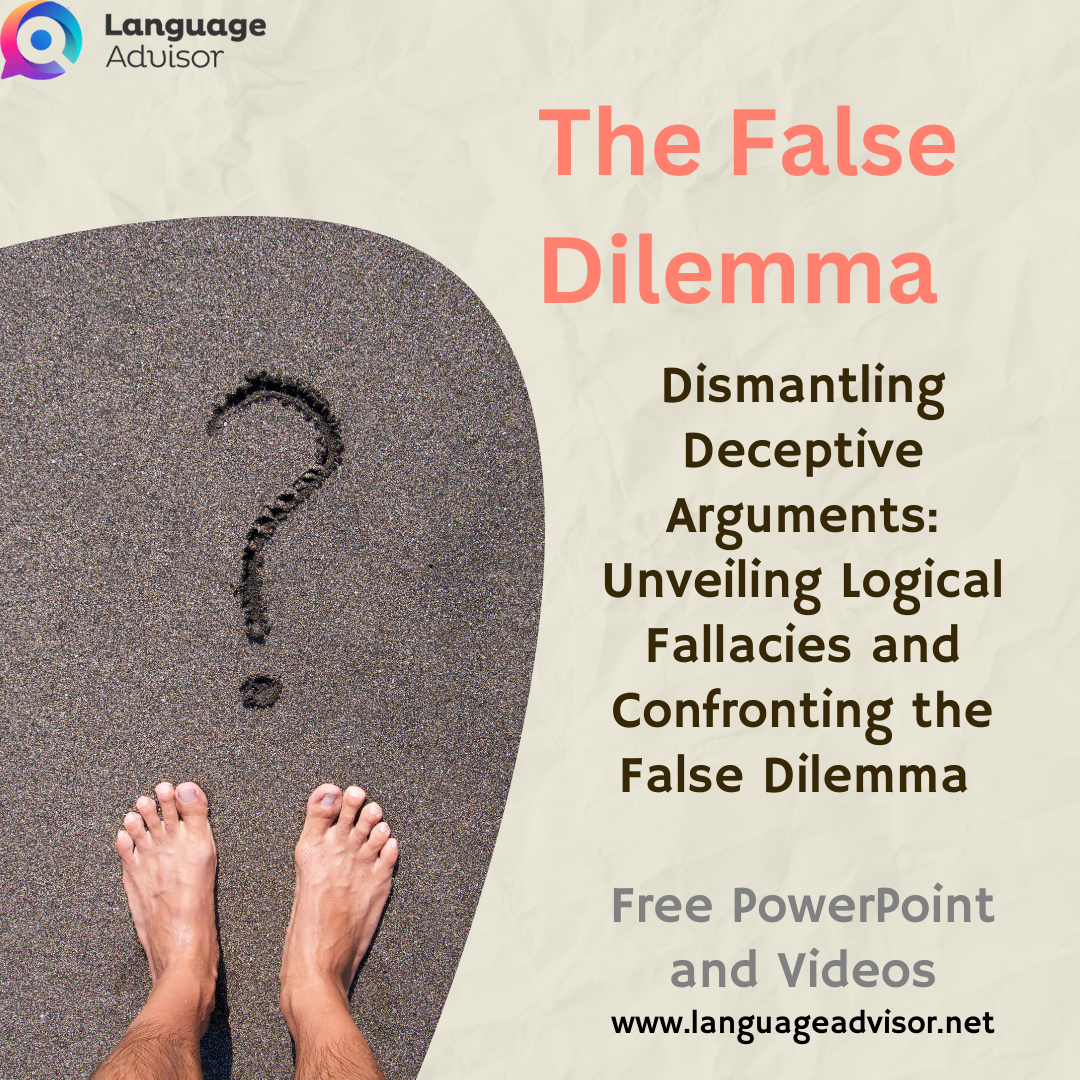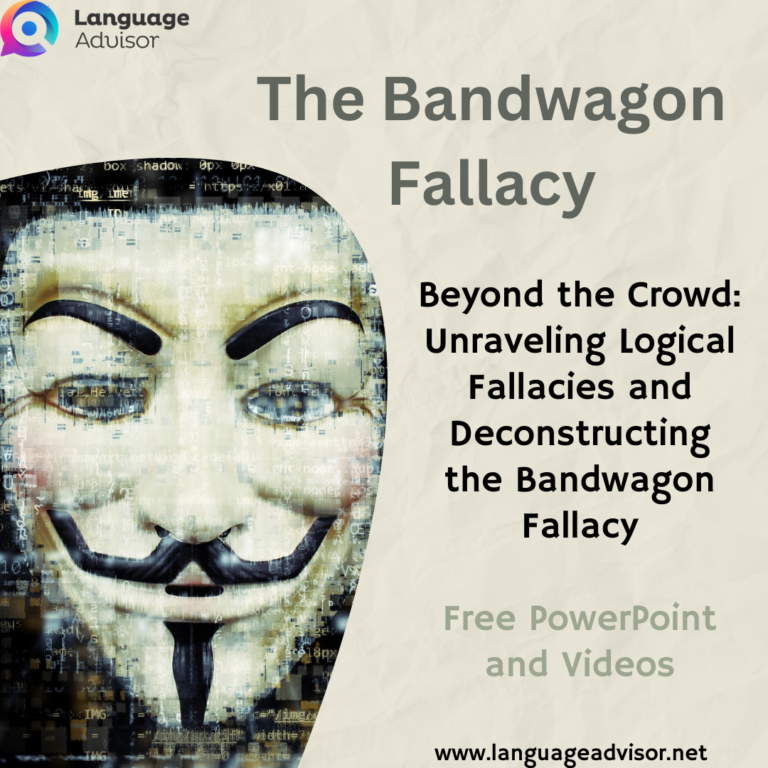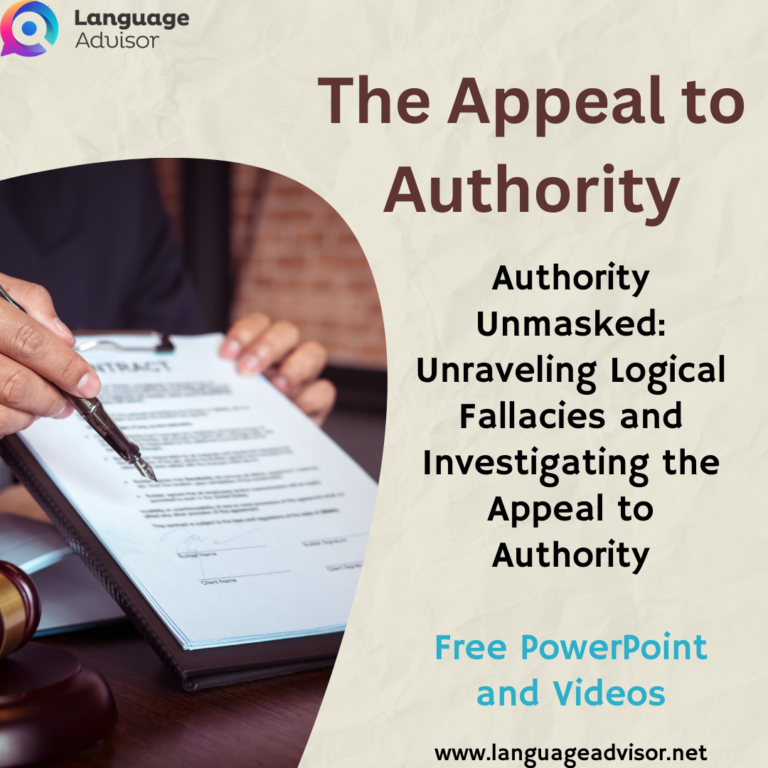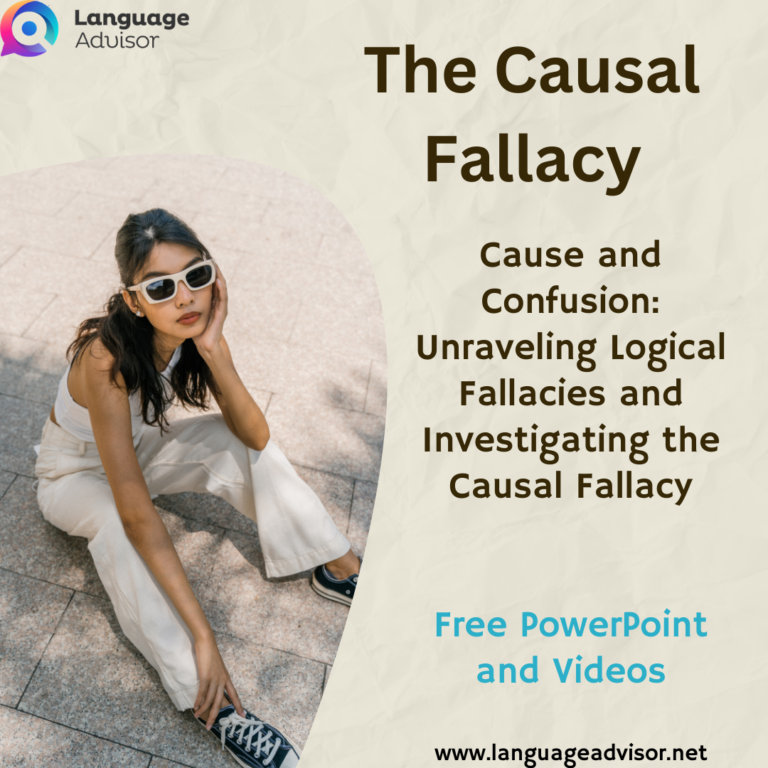Dismantling Deceptive Arguments: Unveiling Logical Fallacies and Confronting the False Dilemma. Free PowerPoint and Videos
Dismantling Deceptive Arguments: Unveiling Logical Fallacies and Confronting the False Dilemma

Dismantling Deceptive Arguments: Unveiling Logical Fallacies and Confronting the False Dilemma
What are logical fallacies?
Logical fallacies are like landmines; easy to overlook until you find them the hard way.
One of the most important components of learning in college is academic discourse, which requires argumentation and debate. Argumentation and debate inevitably lend themselves to flawed reasoning and rhetorical errors. Many of these errors are considered logical fallacies. Logical fallacies are commonplace in the classroom, in formal televised debates, and perhaps most rampantly, on any number of internet forums.
But what is a logical fallacy? And just as important, how can you avoid making logical fallacies yourself? Whether you’re in college, or preparing to go to college; whether you’re on campus or in an online bachelor’s degree program, it pays to know your logical fallacies. This article lays out some of the most common logical fallacies you might encounter, and that you should be aware of in your own discourse and debate.
A logical fallacy is an error in reasoning common enough to warrant a fancy name. Knowing how to spot and identify fallacies is a priceless skill. It can save you time, money, and personal dignity. There are two major categories of logical fallacies, which in turn break down into a wide range of types of fallacies, each with their own unique ways of trying to trick you into agreement.





A Formal Fallacy
A breakdown in how you say something. The ideas are somehow sequenced incorrectly. Their form is wrong, rendering the argument as noise and nonsense.
An Informal Fallacy
Denotes an error in what you are saying, that is, the content of your argument. The ideas might be arranged correctly, but something you said isn’t quite right. The content is wrong or off-kilter.





False Dilemma/False Dichotomy
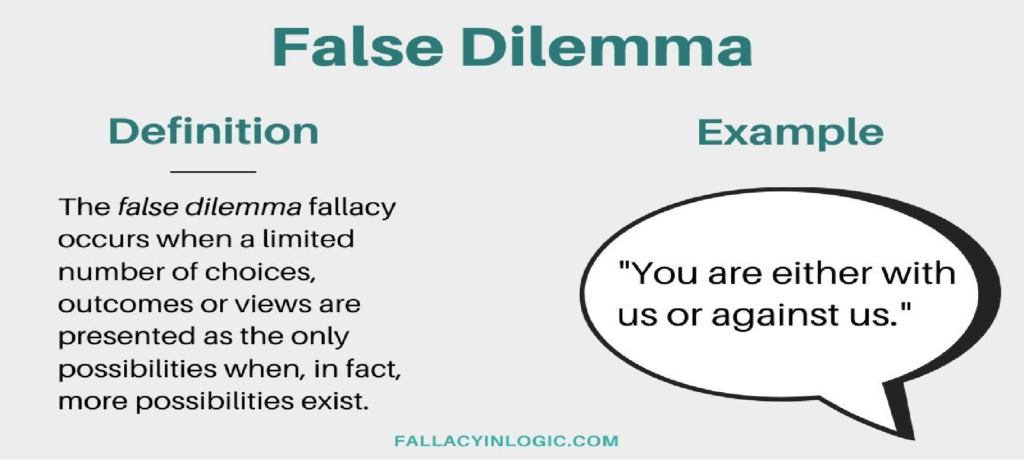



This fallacy has a few other names: “black-and-white fallacy,” “either/or fallacy,” “false dichotomy,” and “bifurcation fallacy.” This line of reasoning fails by limiting the options to two when there are in fact more options to choose from. Sometimes the choices are between one thing, the other thing, or both things together (they don’t exclude each other). Sometimes there is a whole range of options, three, four, five, or a hundred and forty-five. However it may happen, the false dichotomy fallacy errs by oversimplifying the range of options.
Dilemma-based arguments are only fallacious when, in fact, there are more than the stated options. It’s not a fallacy however if there really are only two options. For example, “either Led Zeppelin is the greatest band of all time, or they are not.” That’s a true dilemma, since there really are only two options there: A or non-A. It would be fallacious however to say, “There are only two kinds of people in the world: people who love Led Zeppelin, and people who hate music.” Some people are indifferent about that music. Some sort of like it, or sort of dislike it, but don’t have strong feelings either way.
Dilemma-based arguments are only fallacious when, in fact, there are more than the stated options.
The false dilemma fallacy is often a manipulative tool designed to polarize the audience, heroicizing one side and demonizing the other. It’s common in political discourse as a way of strong-arming the public into supporting controversial legislation or policies.





Which fallacy is this an example of?
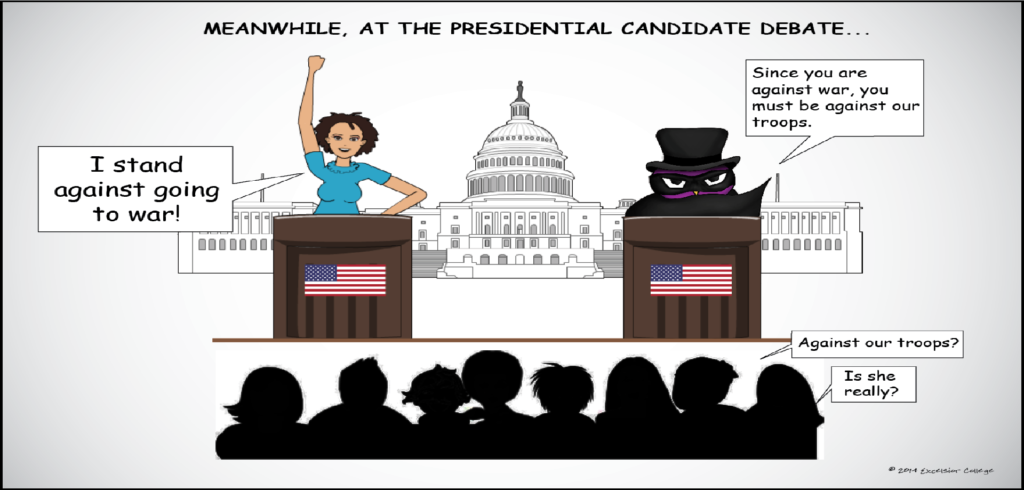

It’s a false dilemma fallacy!
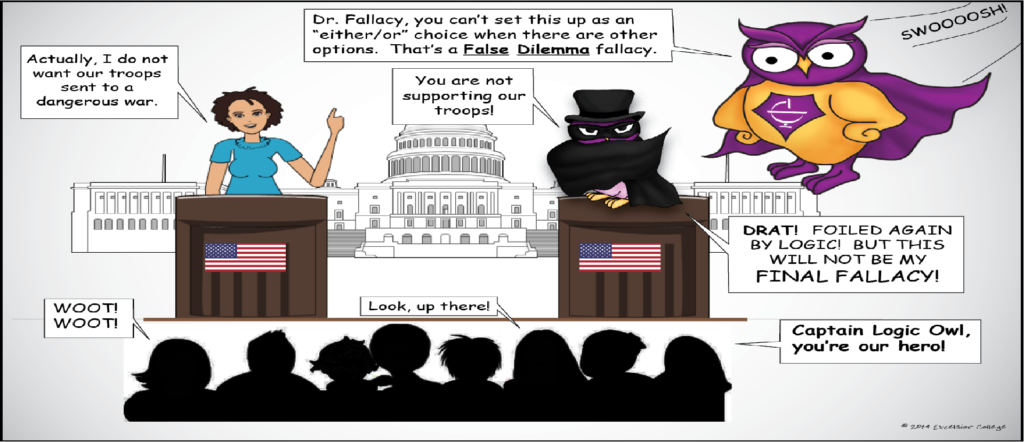

Which fallacy is this an example of?


It’s Appeal to ignorance!












Dismantling Deceptive Arguments: Unveiling Logical Fallacies and Confronting the False Dilemma
DOWNLOAD THE POWER POINT FOR FREE
Logical Fallacies





Also check out these free resources on Critical Thinking and Logical Fallacies






